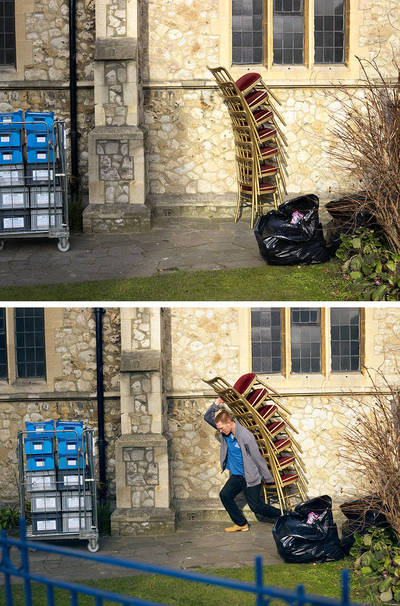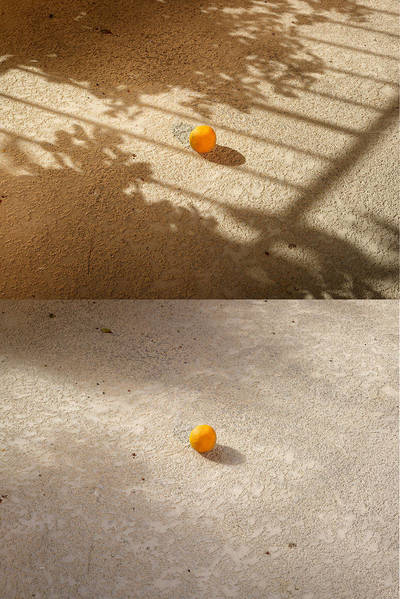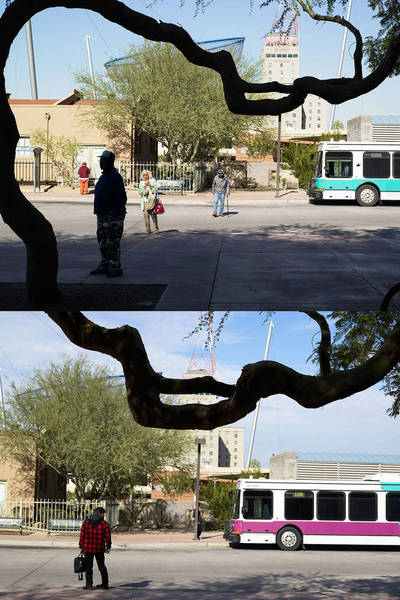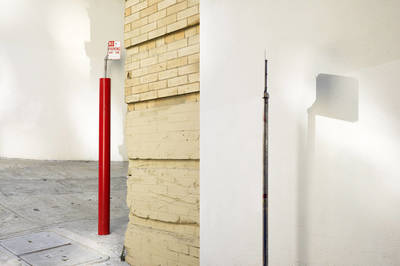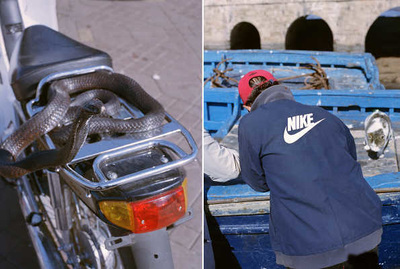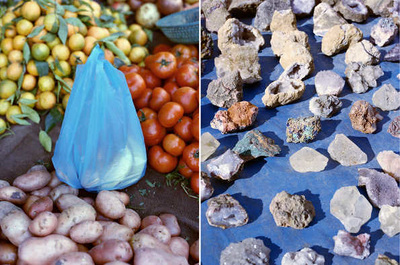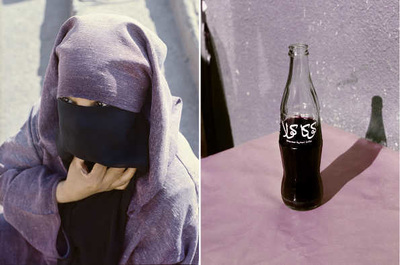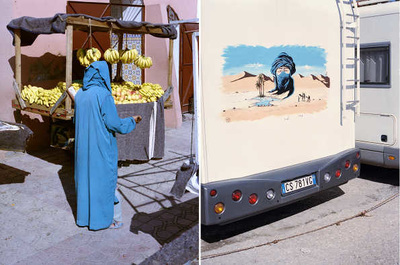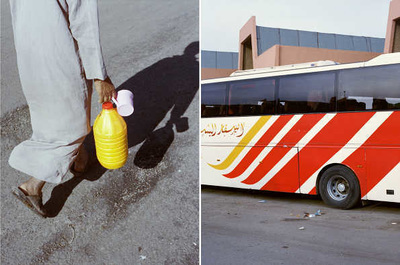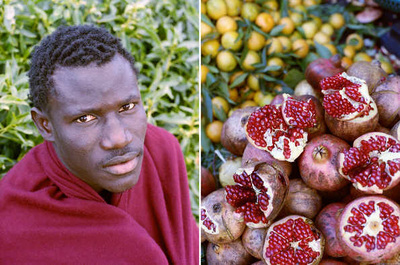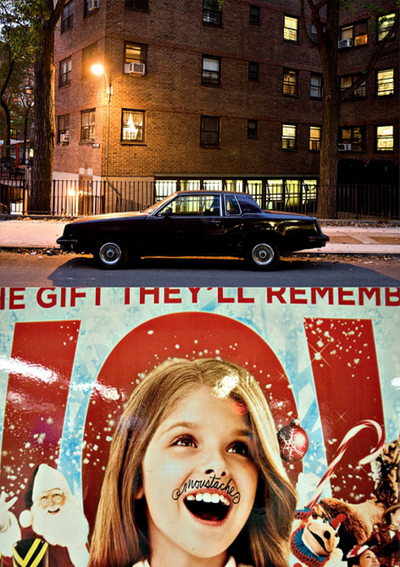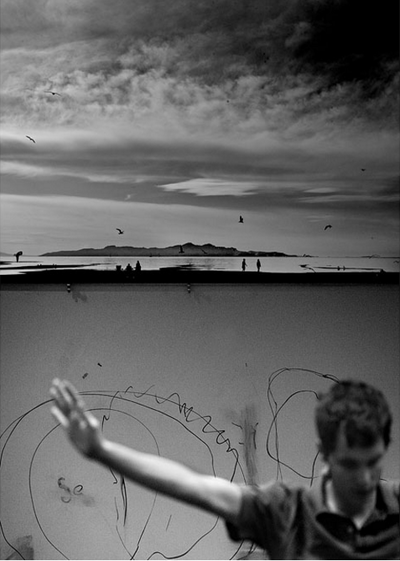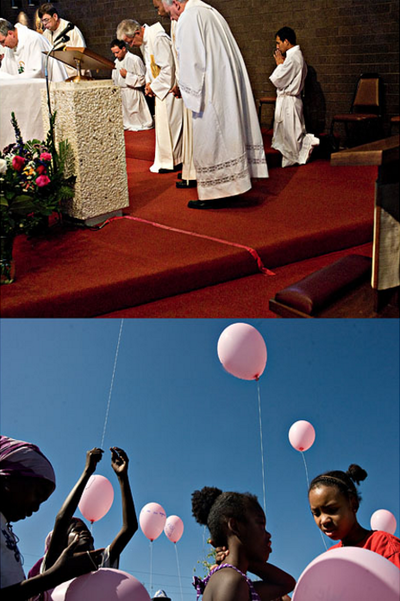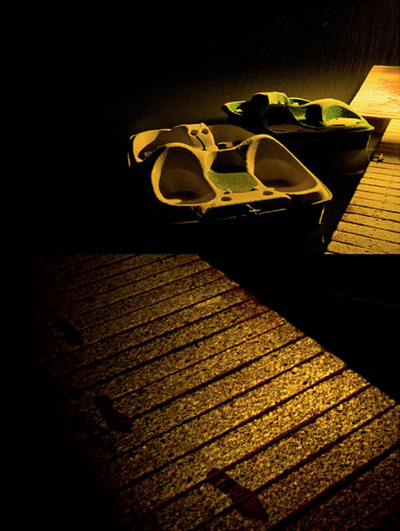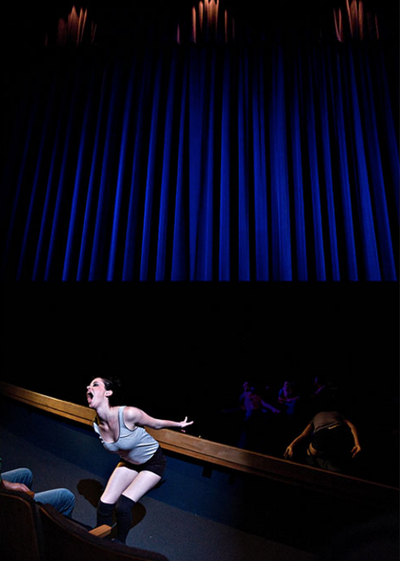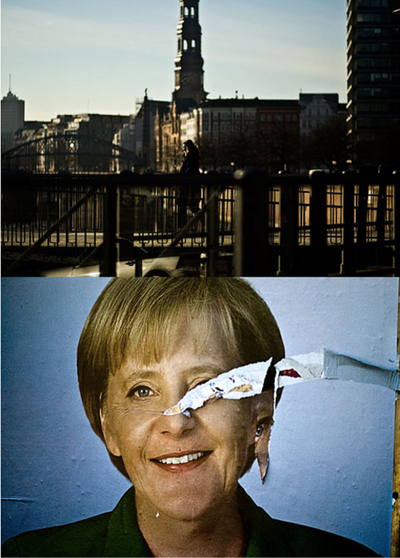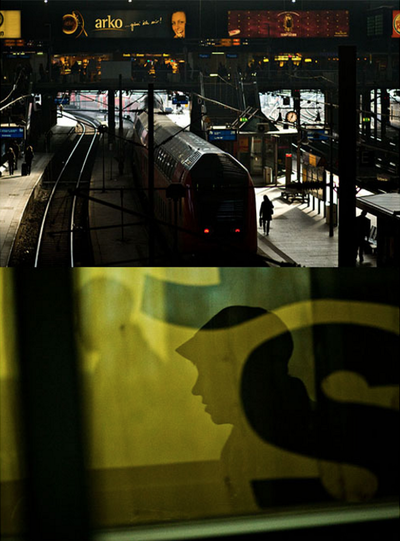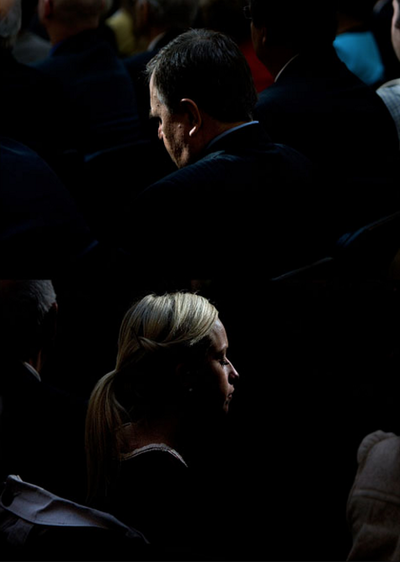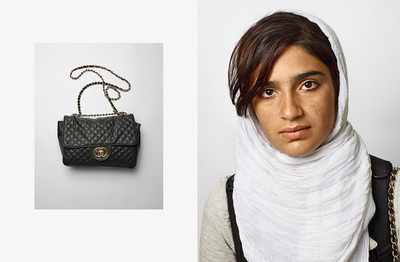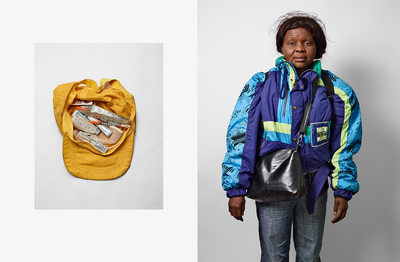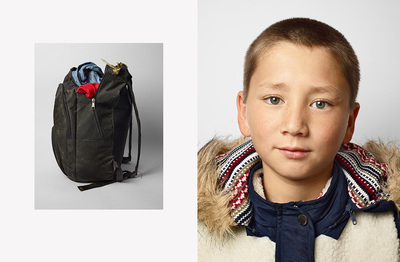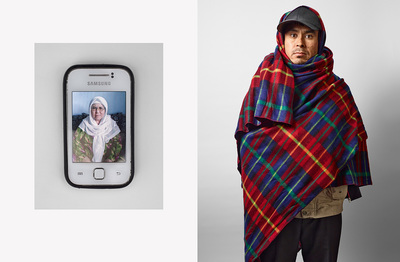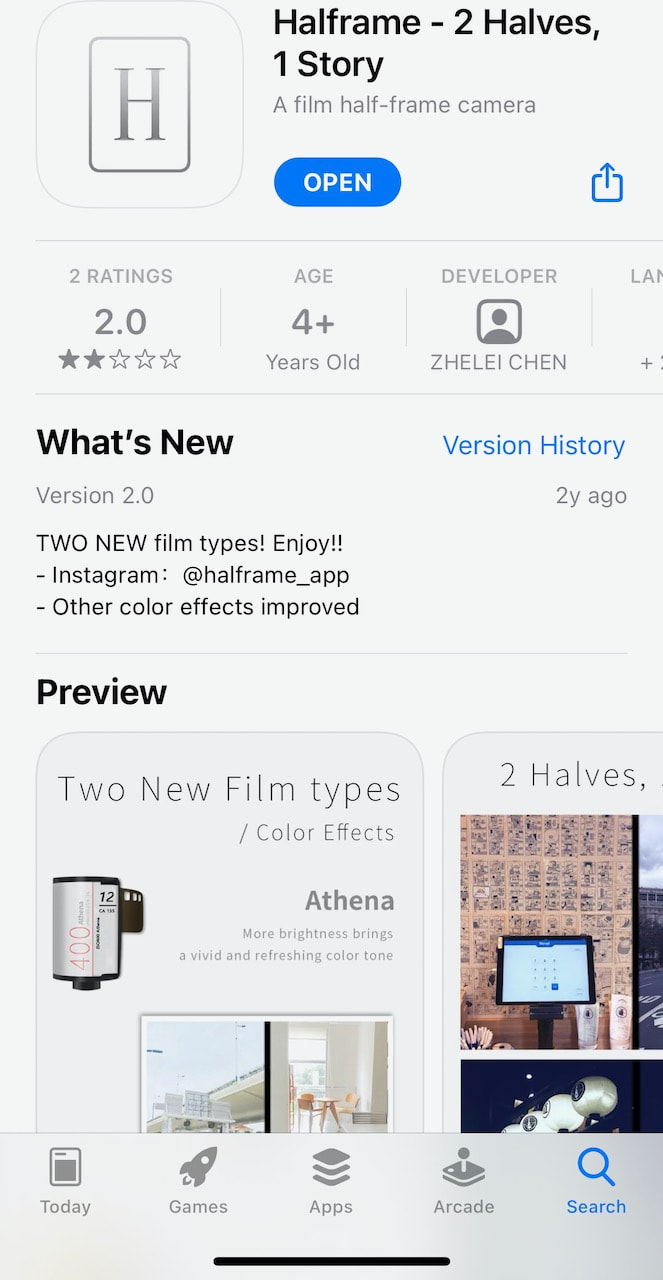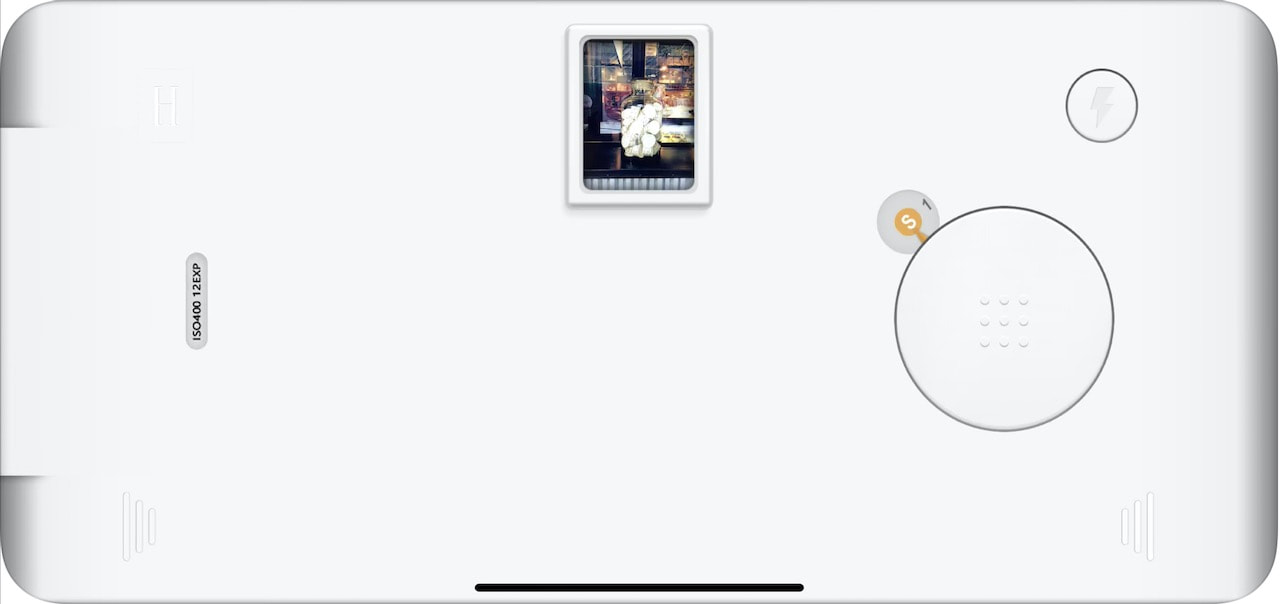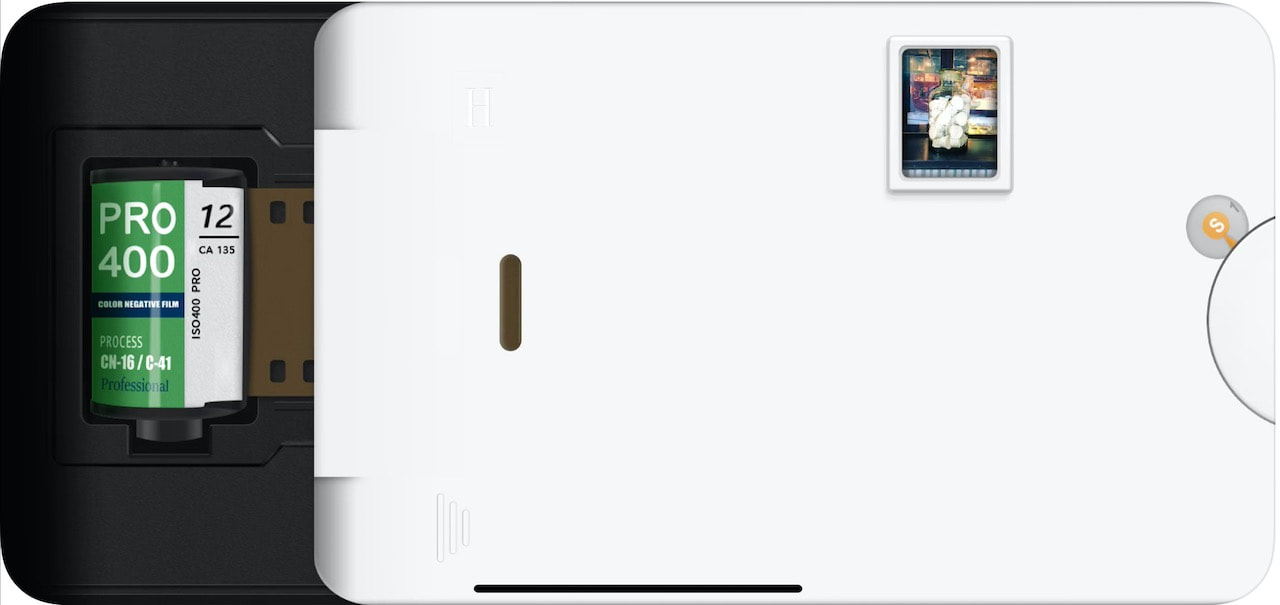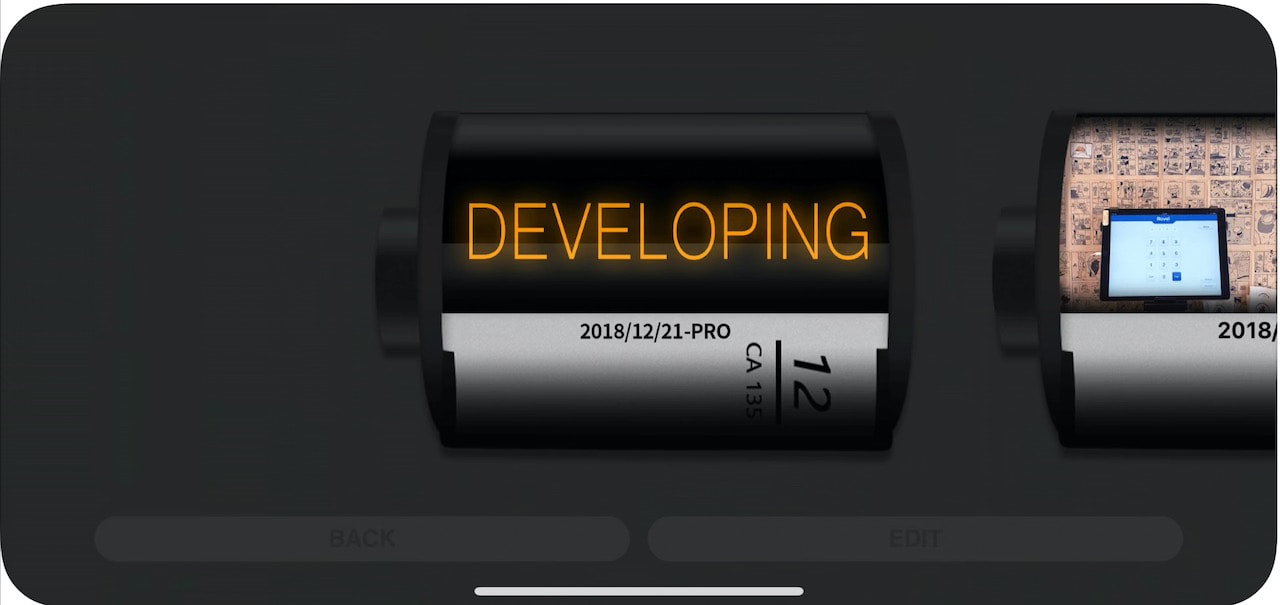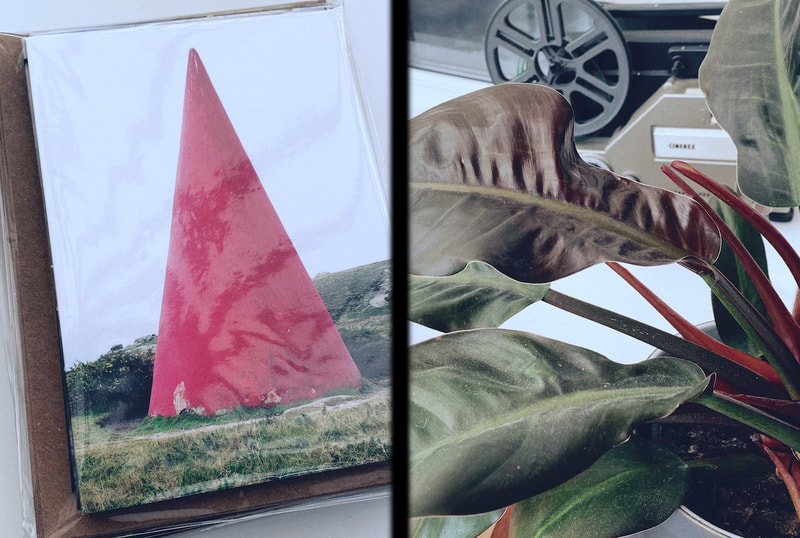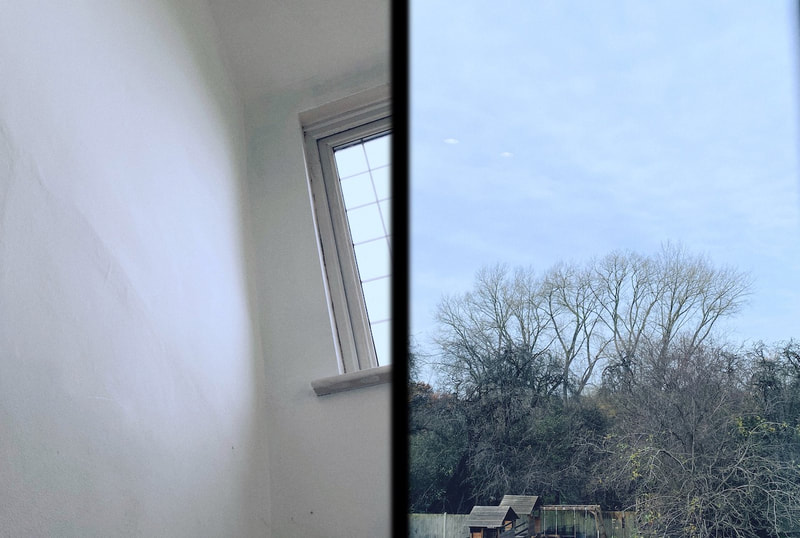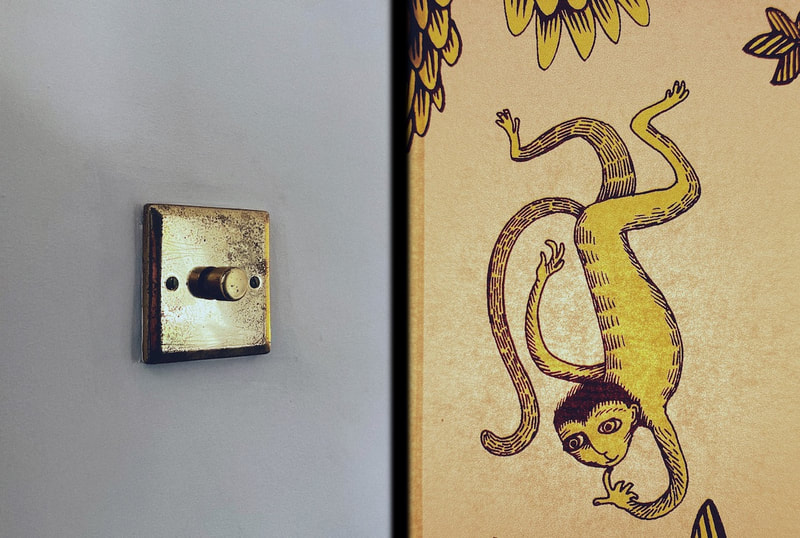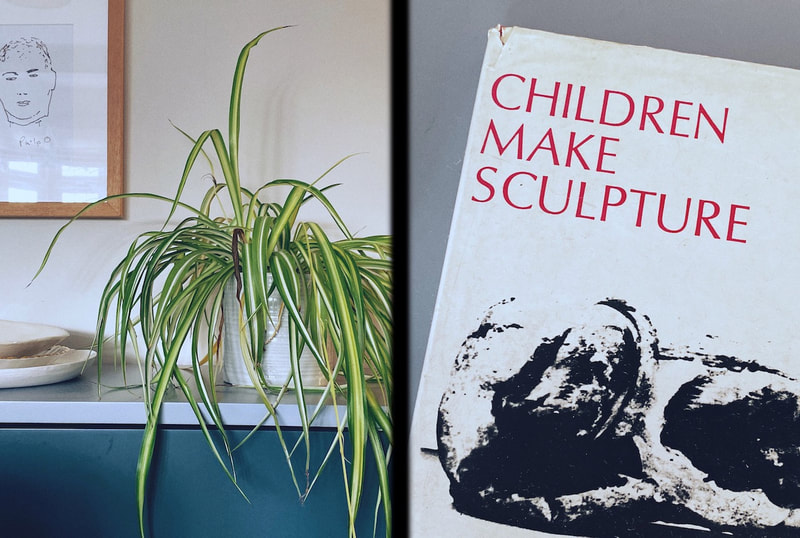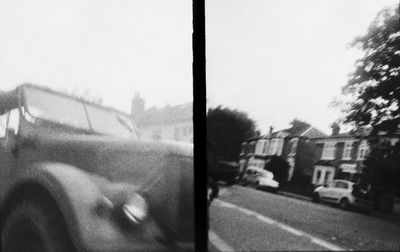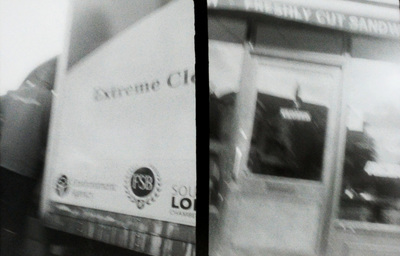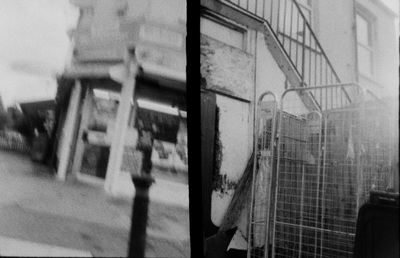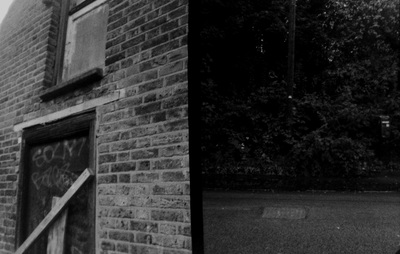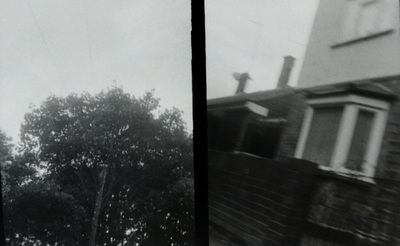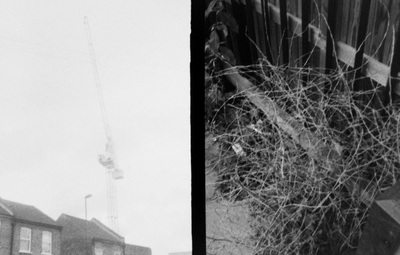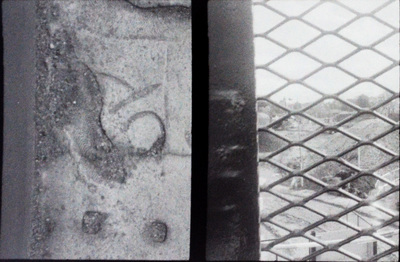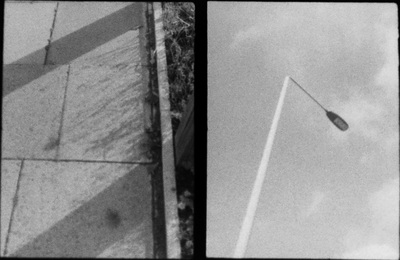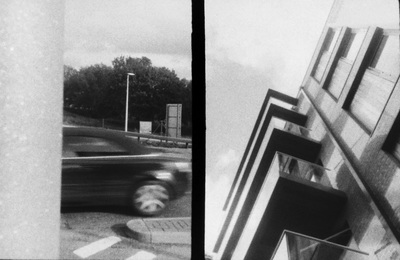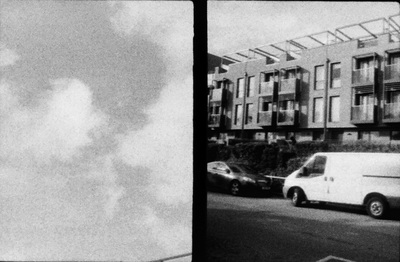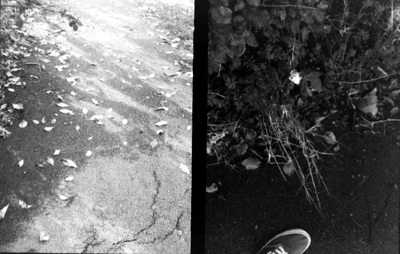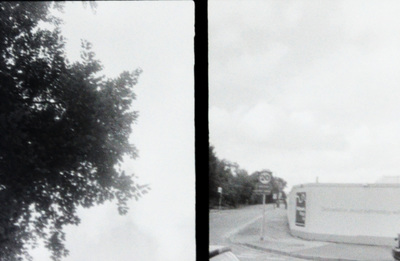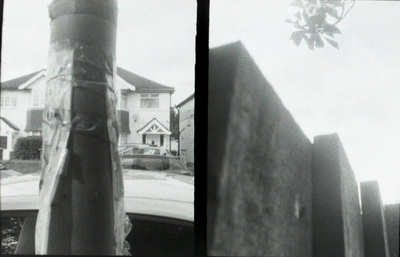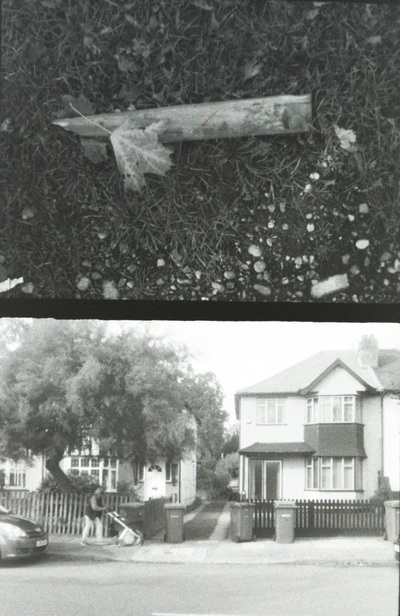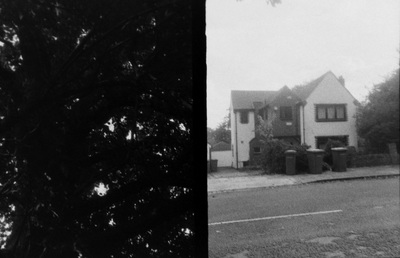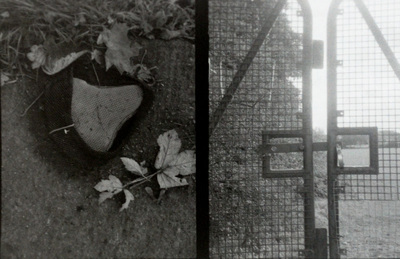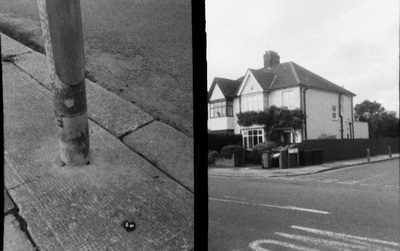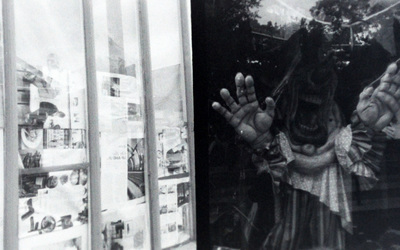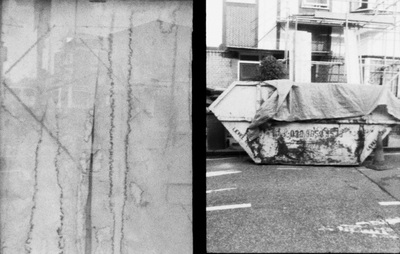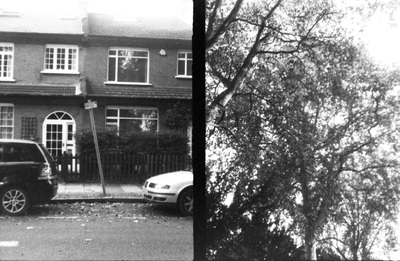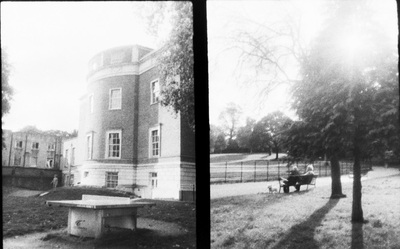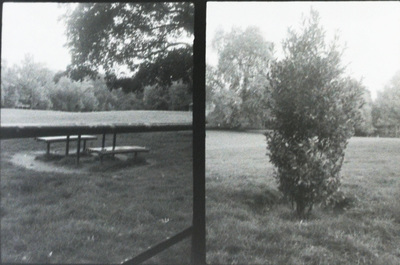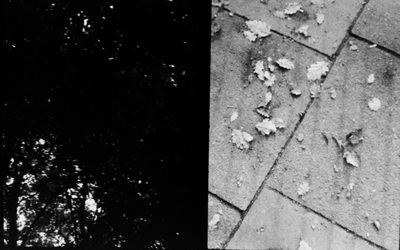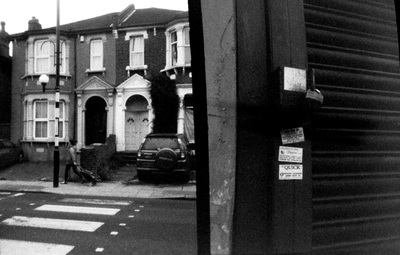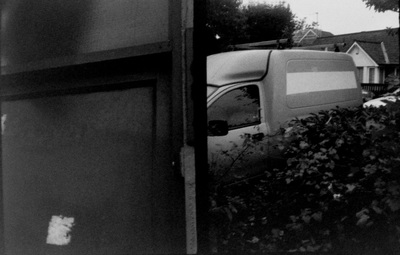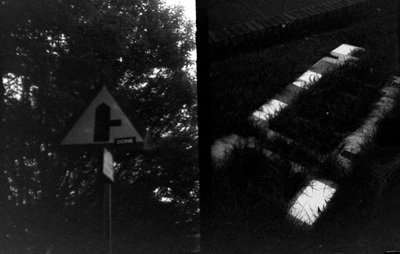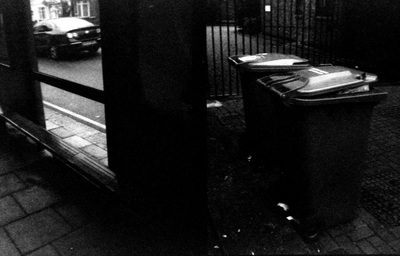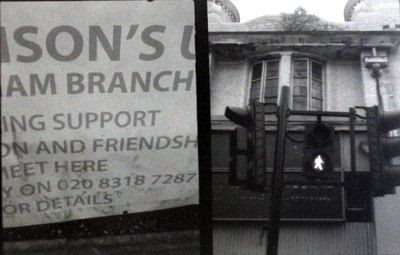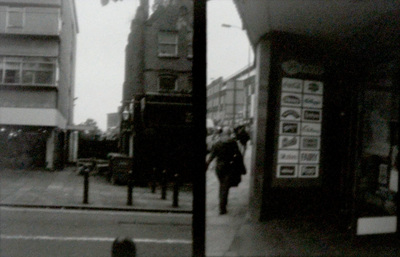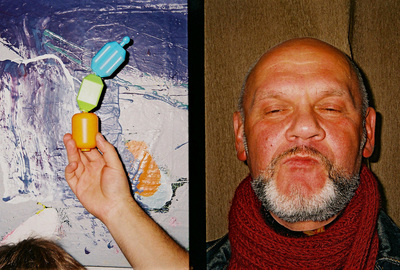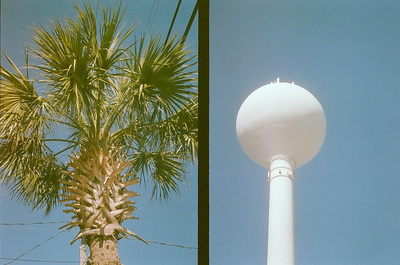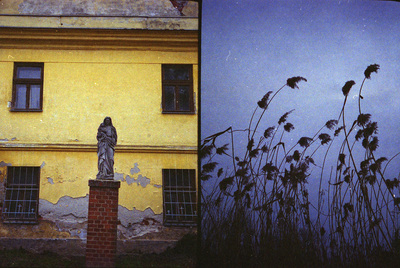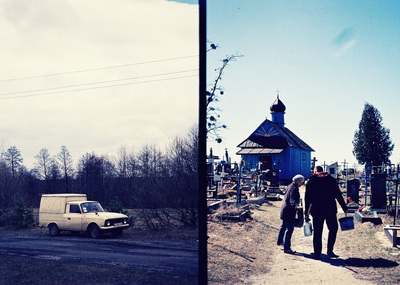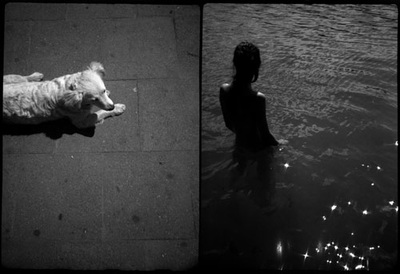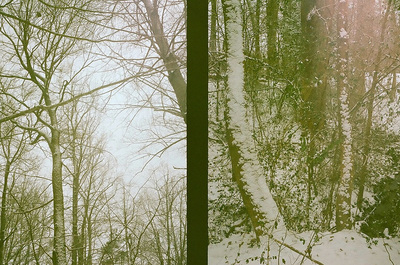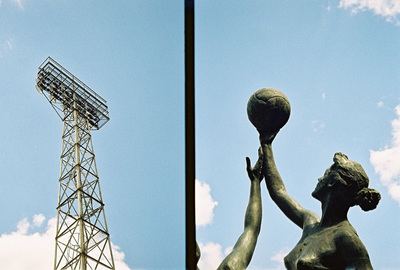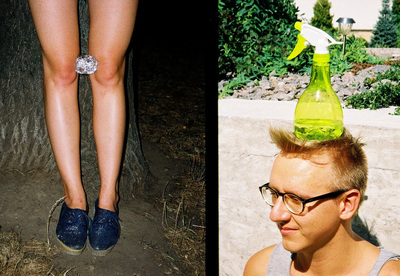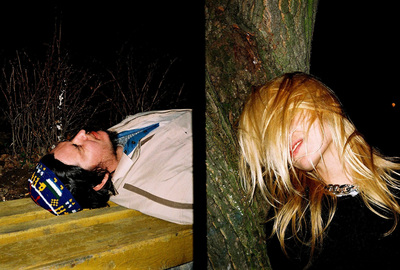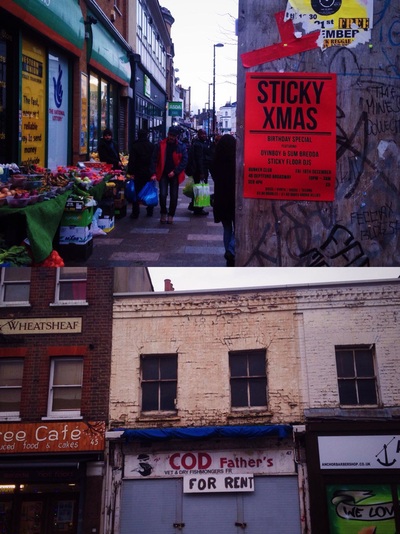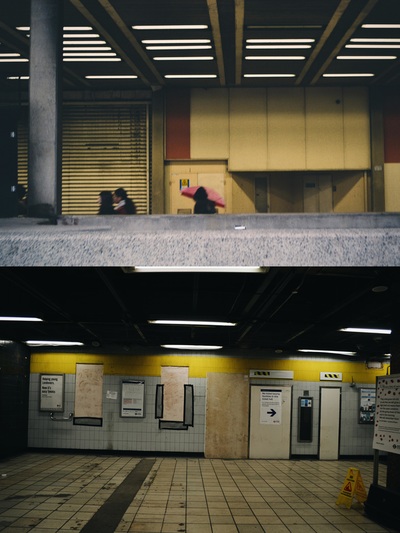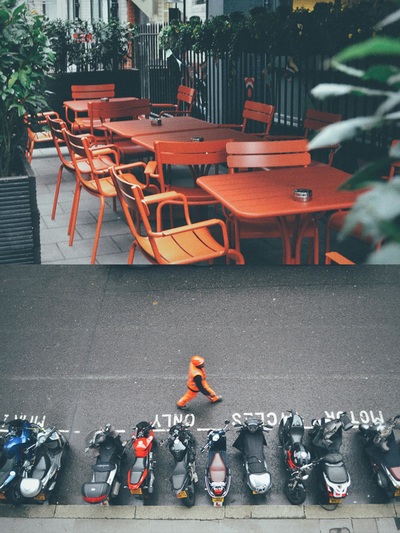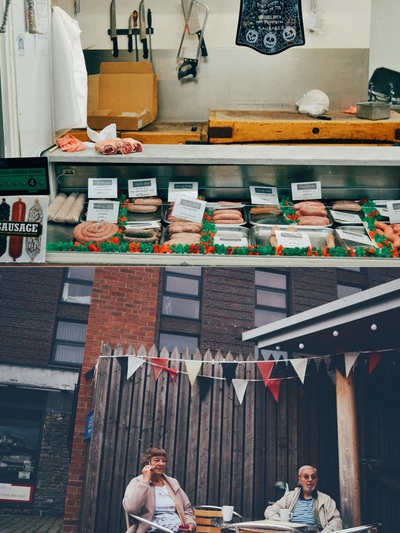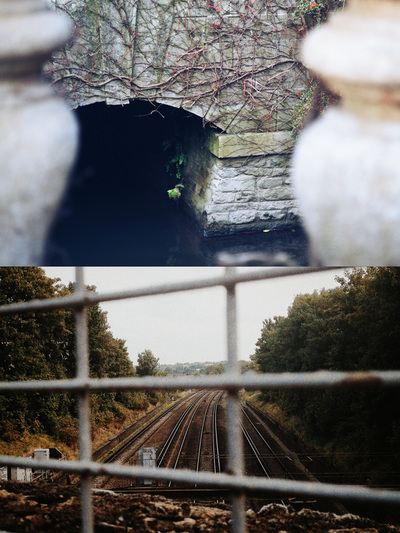Post 16 lesson plan:
Exploring the relationship between photography and film with Luke Fowler.
By Jon Nicholls, Thomas Tallis School
Take a look at this image. What do you see? What can we deduce about the black lines that surround these two frames? What connections, if any, can you see between these two images? How did they end up next to one another? How is this way of presenting and looking at photographs surprising or unusual? Does it remind you of other ways of looking?
|
The idea for this project comes from Luke Fowler's series of half-frame photographs recently published in the book 'Two-Frame Films'. The project is intended to encourage students to concentrate on the editorial aspect of photography, the selection and juxtaposition of photographic images and how this might affect the ways in which a viewer engages with the work. Fowler is better known for his work in film but has used a half-frame camera as part of his practice. This work explores the relationship between two juxtaposed images. A half frame camera exposes two shots on each 35mm frame. A roll of 36 exposures therefore produces 72 images in pairs. The resulting diptychs are still images but reference the theory of montage, first articulated by Russian film makers in the 1920s, specifically Sergei Eisenstein, who proposed that montage was:
|
an idea that DERIVES from the collision between two shots that are independent of one another.
Elsewhere he wrote:
art is always conflict…It is art's task to make manifest the contradictions of Being. To form equitable views by stirring up contradictions within the spectator's mind, and to forge accurate intellectual concepts from the dynamic clash of opposing passions.
-- Sergei Eisenstein, A Dialectic Approach to Film Form
|
This video does a great job of explaining the history of the montage theory of film editing developed in revolutionary Russia and perfected in the films of Eisenstein. |
|
Whereas in film, images flow together in a continuous stream so that every frame has one before and after it, a diptych of two still images enables us to explore the visual dialogue between them. In Fowler's half-frame photographs a variety of approaches generate pairs of images. Sometimes it's clear that two exposures are made in quick succession. Other pairs seem entirely unrelated, possibly having been taken some time apart and in different locations. In other cases, although the two images seem disassociated in terms of subject, location and viewpoint, a poetic link is discernible. This could be related to a particular quality of light, a compositional link, a colour or related atmosphere. In most cases, the two images are paired portraits (shot with the camera in landscape format) but there are several examples of two landscape photographs creating a completed portrait arrangement with one image on top of another rather then side by side.
The way in which he combines the images in Two-Frame Films shows that Fowler is first and foremost a filmmaker, creating a narrative of, and an interaction between, multiple images. These new narratives created by the diptychs, question photography’s reliability as a way of documenting ‘real’ life in a single, still frame. He shows us how we can create a story, or tell our own story, through combining the chance fragments as exposed by photographs.
-- From the GUP website
Considered as a whole, the paired images reveal an event unfolding – a meaningful narrative posed by photographic sets, sometimes close in temporal proximity (the blink of time passing, perhaps), while at other times, the intervals are more expansive, challenging the viewer to connect visible terminal points in a satisfying way [...] In both still and moving image, Fowler considers how an event might be abstracted by the camera apparatus in a subjective ordering of reality that is emphasised by the dialectic between paired images. The photographs are a means of personally testing the ability of the camera to authentically bear witness to an event, and its fallibility as a medium of representation.
-- from the MACK website
Fowler is a Turner Prize nominated artist who is interested in using the medium of film (still and moving) to try to understand the world. He views the films and photographs he makes as partly autobiographical, revealing his own preferences, interests and ways of seeing. Whilst his photographs do show us aspects of his lived experience, situations, events and surroundings, they don't tell us very much. In the process of looking at these pairs of images the viewer is tempted to construct relationships and forge narrative interpretations. We are therefore drawn into Fowler's world and become a participant in the making of meaning.
Counter to the trend for highly composed frames, Fowler's photography celebrates everyday accidents and the fragility of the moment [...] Fowler's pictures present a Grammar of Living in which potential narratives are glimpsed only in ellipsis and constructed retrospectively by the beholder.
-- Robert Barry in Frieze Magazine
Other photographers who create diptychs:
John Maclean's series of diptychs entitled 'Two and Two' present pairs of photographs of subjects taken from two different viewpoints in fairly rapid succession. In some cases, the photographer takes advantage of a formal association. When paired together two tree trunks appear to line up. In others, the light has changed or an obstacle has moved to reveal the view beyond. By placing them side by side, the photographer highlights the inadequacy of a single still photograph in its ability to describe how the world looks and reminds us that we see the world with two eyes (and from slightly different angles) rather than one.
Finnish photographer Osma Harvilahti has created a series of diptychs from a recent trip to Africa. His pairings tend to use colour, tone and shape to create visual links between the images. For example, the photograph of a snake on the back of a motorbike is paired with a portrait of a man's back sporting the curved Nike logo, beyond which we can see coiled and twisted brown shapes. These examples mostly pair street portraits with photographs of mundane objects.
Photographer Mike Terry has created a series of diptychs using a variety of strategies. His images sometimes appear to be two closely related frames from the same event. Some pairs are united by the quality of light. Other pairings juxtapose different viewpoints, subjects, colours and moods to create tension.
Katie Orlinsky's Alaskan 'Spring/Thaw' diptychs juxtapose two images of the same scene photographed at different times of the year.
James Mollison has made several series of diptychs using an editorial documentary approach, including this sequence of images for Time Magazine entitled 'What refugees carry with them':
Some suggestions:
- Students could research Luke Fowler's practice, with a focus on his Two-Frame Film photographs, recording their responses to these images.
- Students could research the theory of montage in cinema, especially the notion that the sum of two images presented side by side is greater than the sum of their parts.
Eisenstein saw film editing, or montage, as a process which operated according to the Marxist dialectic. This dialectic is a way of looking at human history and experience as a perpetual conflict in which a force (thesis) collides with a counterforce (antithesis) to produce from their collision a wholly new phenomenon (synthesis), which is not the sum of the two forces but something greater than and different from them both…Eisenstein defined montage as a series of ideas or impressions which arise from “the collision of independent shots”…Just as the individual words in a sentence depend for their meaning upon the words which surround them, so the individual shots in a montage sequence acquire meaning from their interaction with the other shots in the sequence.
-- David Cook, A History of Narrative Film
- Whilst it's possible to pick up half frame analogue cameras second hand at reasonable prices (see examples of images made with a half-frame camera below), students could explore the various ways in which digital images can be juxtaposed in pairs. They should consider their rationale for selecting and arranging pairs of photographs, experimenting with different pairings and reflecting on their choices E.g. colour associations, quality of light, surface textures, composition etc.
- Some photo apps for mobile devices mimic the effect of taking pictures with a Half-Frame camera. Half Frame is a good example. Students could experiment with the process of creating diptychs using an app like this which also provides the illusion of using different types of 'film':
- Chance juxtapositions can also be very illuminating, sometimes revealing unexpected associations and contrasts between images. (Apparently, Luke Fowler himself only discovered the chance relationships between the pairs of images he'd taken with the half-frame camera once the first roll was printed.) Students could select an even number of photographs and lay them face down. A random number generator can then be used to select image pairs. Connections and/or contrasts between the images can then be sought through the process of concentrated looking.
- A similar process of pairing images can be achieved through collaboration. Students could each contribute one or more photographs they have made to a class collection. Each student can then select pairs of images from this group, justifying their choices. Inevitably, different choices will be made by each individual and a discussion can be had which explores some of these decisions and ways of seeing.
- Students might also wish to generate chance associations between pairs of photographs by using a set of constraints, rules or instructions. They could either create these for themselves (see the examples below) or design them for others. Choices about what and how to photograph can all be subject to these rules and dice can be used to select from the list. For example: roll 1 = photograph something red; roll 2 = look up; roll 3 = look left; roll 4 = close your eyes and photograph; roll 5 = photograph something blue; roll 6 = look down etc. The student would then sequence the images in pairs using the exact order in which they were taken. Similarly, time can be used as the constraint. For example, take a photograph on the hour every hour for a whole day. The resulting pairs of photographs would therefore represent the passage of an hour in the life of the photographer.
Student Examples:
The following images were taken by a Year 12 student experimenting with black and white film in an Olympus Pen half-frame camera. Her approach involved photographing according to a set of pre-determined 'rules' she designed herself. These involved rolling a die to determine the rule to follow. For example:
- Not looking through the viewfinder (blind)
- Looking up or down, right or left (directional)
- Searching for a matching colour (colour)
Blind
Directional
Colour
All photographs by Georgina Baker, Thomas Tallis School.
